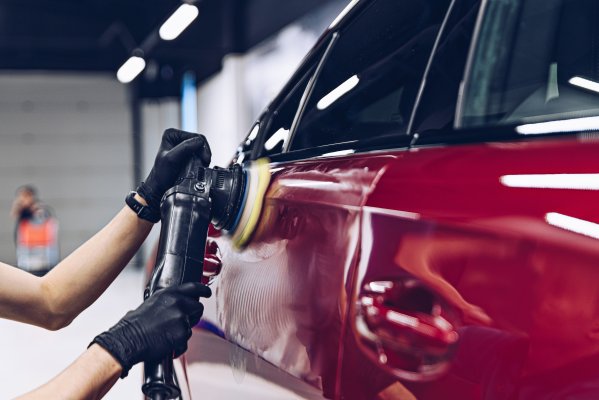Polishing the car is one of the best ways to ensure the best shine and luster of its exterior. It is best done after washing it and is followed with waxing for the best results. While it is a common maintenance procedure for many auto detailing shops, owners should know that they can also do it at home. Another term for this is buffing, although some usually attribute the use of softer cloth wheels for buffing while the use of abrasive belts are for polishing. Generally speaking, though, they are used interchangeably which is why dual-action polishers can also be called dual buffers.
Dual action buffers or dual-action polishers are tools that make the process of polishing faster. This is used to remove surface contaminants that washing can’t remove and to remove any minor scratches. It will also help give shine to the surface of the car. These are generally available in most auto shops and even online. These are used by professionals but can also be used even by beginners at home. It is generally easy to use as long as users are informed.
Dual action polishers work just like hand polishing with its use of oscillating and rotating motions that gives it a gentle yet complete touch. With it, users can expect thousands of revolutions per minute which makes it more efficient. Usually, users can expect 1500 to 2000 RPMs for polishing their car that depends on whether you are compounding or finishing. Generally, users are advised to purchase a unit which has speeds compatible with the size of their vehicle, the severity of its scratches, and its price.
To use it, users simply need to first park the car in a place away from dirt. Here, you can then wash the car’s exterior, use a clay bar, and prep the paint for corrections. Leave it to cool for a little as you don't want the panels to be hot. After the paint has cooled, you can start polishing it. First, apply the compound on the damp pad. You can also apply the compound on the parts that you want to polish instead. After this, start the machine at a lower speed which you can then increase little by little once you get comfortable with it. Make sure to keep it at a constant pace when thoroughly polishing the parts.
The main difference with the tool is that it prevents friction and heat from building up in the car exterior which will protect its paint. It does this by having tiny vibrations that can dissipate the heat. You can also stop it from turning when applied with pressure. This makes it good for beginners who may still have accidents and mishaps while using it for the first time.
Even with all of these safety features, it is still very reliable for removing minor scratches and swirls which makes it good for polishing the car.
Double-action buffers or polishers are best used for minor scratches that are recommended because even amateurs can use it easily because of its safety measures. However, scratches that go beyond the clear coat are those that need professional treatment where they may be fixed using rotary wheels. These are tools that move in a single direction and are generally faster in polishing. However, it is usually advised only for professionals as this can easily build-up heat when used which can then damage the paint of the vehicle. However, most scratches can be handled by dual-action polishers which is why it is suggested for people to use that don't feel comfortable with paint correction. A dual action polisher has a much more forgiving learning curve than a rotary polisher.
The main selling point of dual-action buffers or polishers is their ease of usage. With it, users can polish their cars at home and without any risk of damaging their paint in the process. It is also comfortable to hold and easy to learn to use. Lastly, it comes in various speeds that can match any vehicle’s needs.
As mentioned above if you are new to paint correction, a rotary polisher is not the best choice as there is little room for error when compared to a dual action polisher. If you are unsure of which brand or model to get you can read our reviews of dual action polishers to find the best fit for you.





